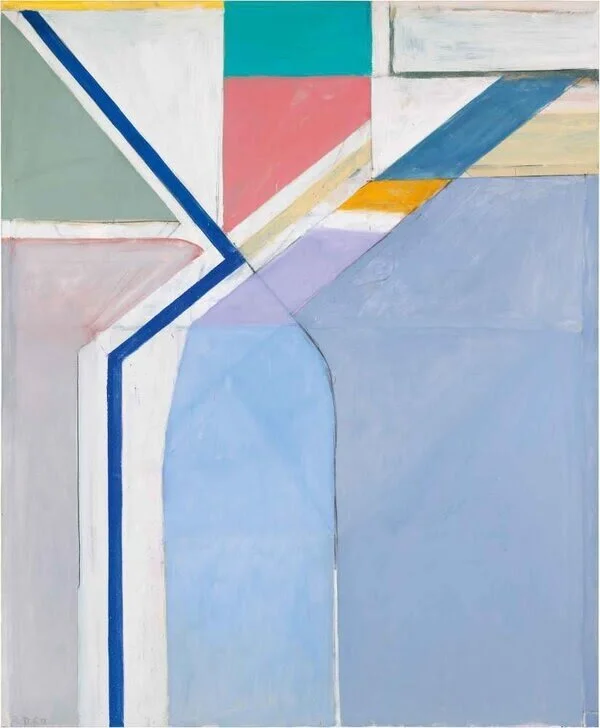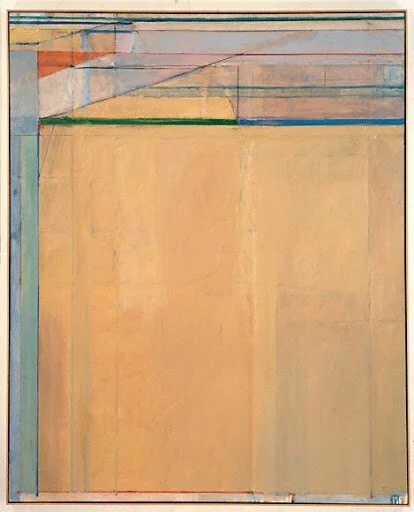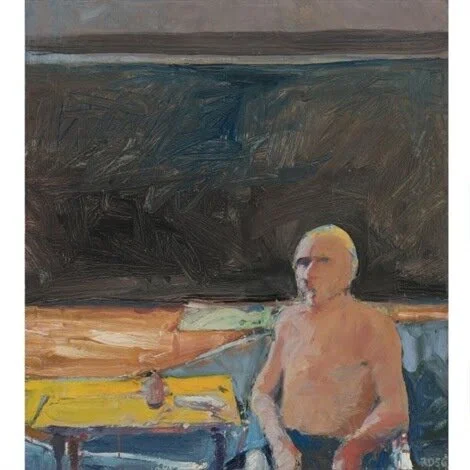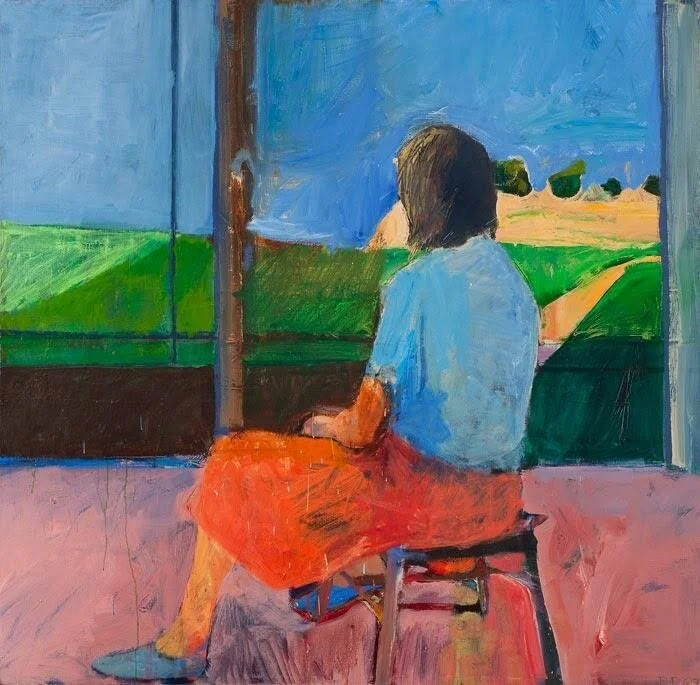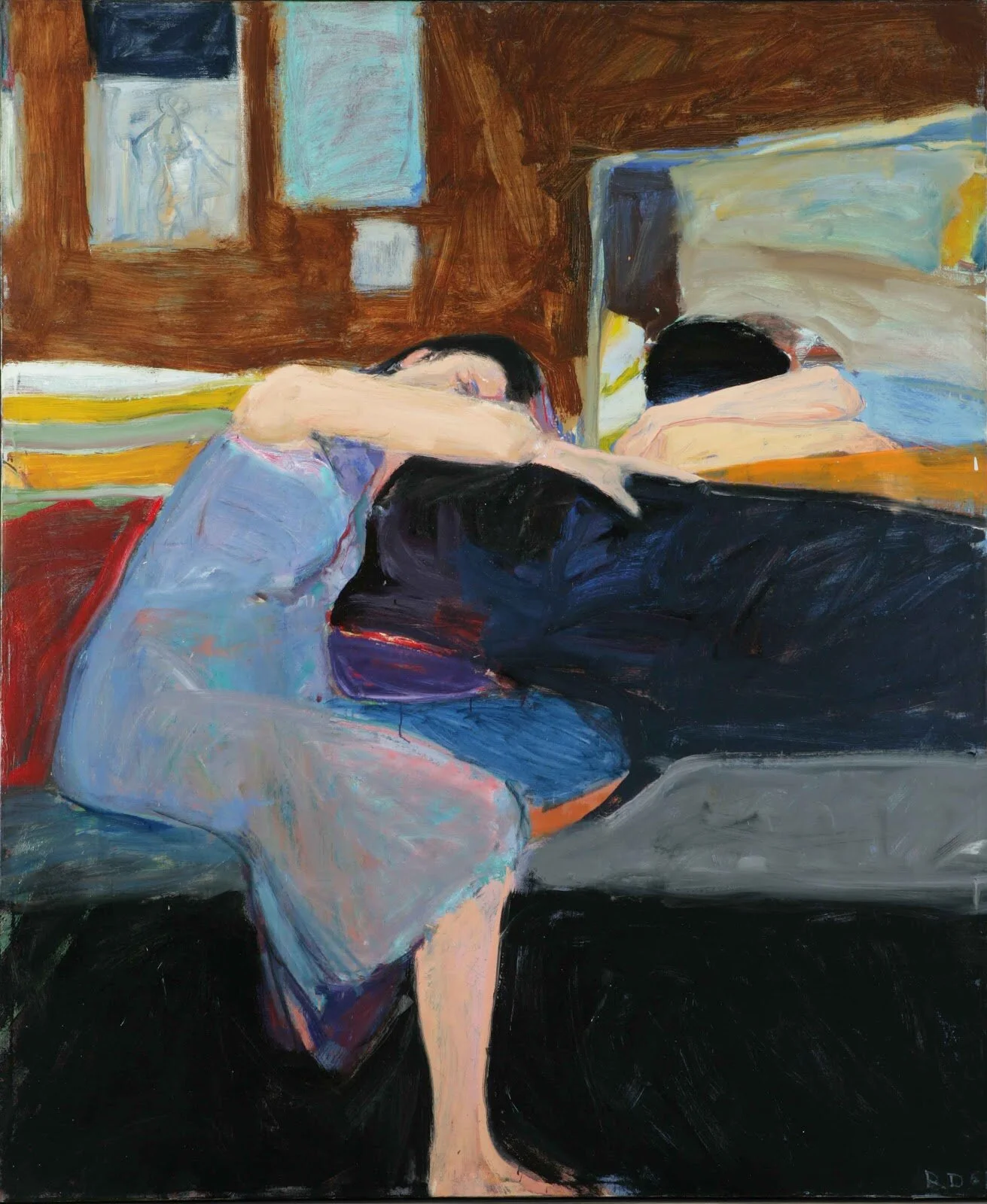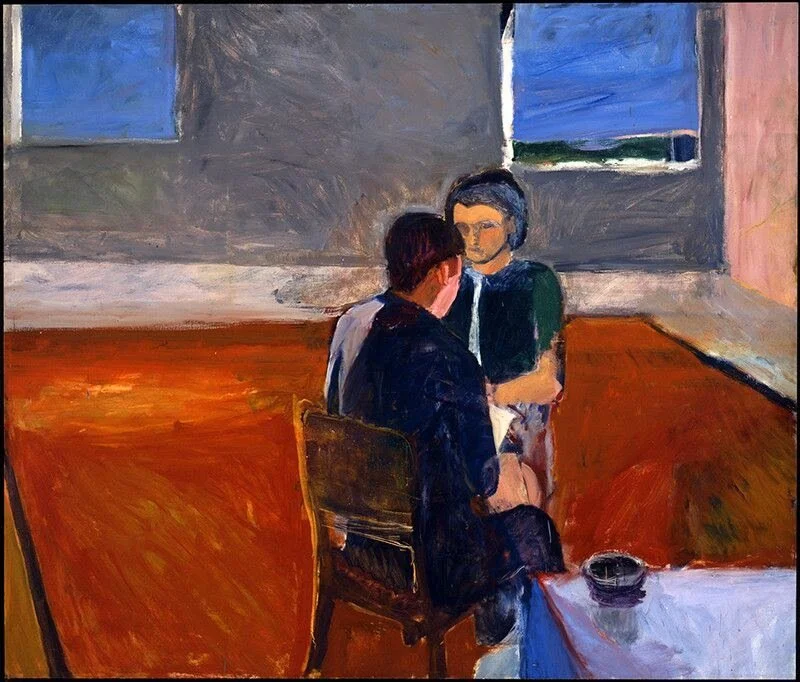Paintings of Light
It is spring and what I notice most is that the light is different. This brings to mind a favorite abstract artist who literally painted with light: Richard Diebenkorn (b.1922 – d. 1993) was an American painter. Born in Portland, Oregon, Diebenkorn moved with his family to San Francisco when he was two years old. Even as a child, he was curious about art-making. His early work is associated with abstract expressionism and the Bay Area Figurative Movement of the 1950s and 1960s.
Recollections of a Visit to Leningrad, Diebenkorn (1965)
From fall 1964 to spring 1965, Diebenkorn traveled through Europe and he was granted a cultural visa to visit important Soviet museums and view their holdings of Henri Matisse's (b. 1869 - d. 1954) paintings. When he returned to painting in the Bay Area in mid-1965, his resulting works summed up all that he had learned from more than a decade as a leading figurative painter.
The Matisse painting, French Window at Collioure, exerted tremendous influence on Diebenkorn's last series, Ocean Park, which were instrumental to his achievement of worldwide acclaim.
French Window at Collioure, Henri Matisse (1914)
Ocean Park #24
Ocean Park #54
Ocean Park #79
Ocean Park #67
Diebenkorn began working on the Ocean Park series in 1967 and developed it over the next 18 years. This became his most famous work and resulted in approximately 135 paintings. These large-scale abstract compositions are named after a community in Santa Monica, where his studio was located. From his window, he could see the geometry of the streets crossing one another and the hillside. These paintings were more about light and Diebenkorn painted the quality of the light on the landscape, framed by the angled geometry of his studio windows. His use of color was reminiscent of Matisse and echoed Piet Mondrian (b.1874 - d.1944) in geometry.
What I find interesting is that Diebenkorn at one point decided he needed to throw a speed bump in the path of his accelerating career. He turned from abstract to the form of figurative painting. These years are referred to as The Berkeley Years (1953-1966). Diebenkorn had never given up the weekly drawing sessions with a live model. Figure drawing was one way to train the intricate relationship between the eye and the hand.
Seated Man (1956)
For me, these paintings have a strong sense of solitude... the painter’s and the painted. The figures seem imagined. Diebenkorn’s work was evolving as a concentrated engagement with the physical stuff of oil paint and canvas, filtered through a complex conversation between the deep memory of landscape and light; the emotional temperature of the moment; and, a psychological estrangement from them, manifested by an artist at work alone in the studio.
Woman On A Porch (1958)
Girl Looking at The Landscape (1957)
Sleeping Woman (1961)
Through the use of two figures in space, this painting explores undercurrents of trouble in paradise. This work carries a more psychological tension than most of Diebenkorn’s other figurative works, suggesting that he too wanted to make statements about the human condition.
Man and Woman, Seated (1958)
Diebenkorn died in Berkeley on March 30, 1993. He was 70 years old.
Watch Richard Diebenkorn: the man, his art, his life. Presented by Christie's.
Go to the window…
Let the light in…
See you next Sunday.




